Daehan Dawon Tea Plantation (대한다원)
2025-06-05
763-65, Nokcha-ro, Boseong-gun, Jeollanam-do
+82-61-852-4540
Daehan Dawon Tea Plantation produces high-quality green tea and is a popular tourist attraction year-round thanks to the vast rows of tea trees that line the hillside like a deep green carpet. Despite being located on a small peak at just 350 meters above sea level, the observation deck at the summit offers views of the sea on clear days. The entrance to the tea plantation is also lined with tall cedar trees, adding a unique aspect to this plantation. Daehan Dawon Tea Plantation has been featured as a filming site in dramas such as “Summer Scent (2002),” “Legend of the Blue Sea (2017),” and “The Rebel (2017).”
Deogyusan National Park (Main, Jeoksang Section) (덕유산국립공원 (본소,적상분소))
2024-04-07
159, Gucheondong 1-ro, Muju-gun, Jeonbuk-do
+82-63-322-3174
The area of Deogyusan National Park stretches out from the southern ridges of Sobaeksan Mountain, covering regions within four different counties in Gyeongsangnam-do and Jeollabuk-do. The park is nestled in Deogyusan Mountain, Korea's 4th tallest mountain with the summit reaching an elevation of 1,614 meters. The mountain is blessed with a 36-kilometer valley dotted with several scenic points, ponds, and waterfalls.
The mountain contains prestigious cultural heritages, such as Jeoksangsanseong Fortress (Historic Site No. 146) and the Hanging Painting of Anguksa Temple (Treasure No. 1267) to name a few. It is also home to diverse wildlife animals and plants. The mountain's beauty can be enjoyed all year round, with royal azaleas in spring, a colony of daylilies in summer, colorful autumn foliage in fall, and a white snowy mountain vista in winter.
Deogyusan Resort (무주덕유산리조트(구, 부영덕유산리조트))
2025-03-18
185, Manseon-ro, Seolcheon-myeon, Muju-gun, Jeonbuk-do
+82-63-322-9000
Deogyusan Resort (former Muju Resort) is located in Mt. Deogyusan, and is a representative mountain resort. It blends in beautifully with the scenery of Mt. Deogyusan National Park, and is the perfect place to enjoy winter sports.
<br>
<br>Deogyusan Resort is great place to relax all year round, with Alps-style first class hotel and a variety of convenience facilities in its 2,200,000 pyeong area. The resort is especially famous for its ski courses, and many enthusiasts come here during the winter. At Manseonbong Peak (1,215m) skiing grounds, there is a lift that can handle 13,000 people at once, and there are a variety of courses from beginners' to professional levels.
<br>
<br>Seolcheon Peak (1,520m) skiing ground where Asian Universiade competition officially opened, has a variety of gondolas and lifts, along
with a hot spring to relax after skiing. The outdoor hot springs with snow-covered mountains is especially famous.
<br>
<br>In addition to the aforementioned facilities, you can enjoy tennis, mountain climbing, MTB, and horse riding, and at the theme-based shopping mall, Carnival Street, there are interesting products to see and food to enjoy. You can buy famous brand products from all over the world here cheaply, so look around.
Muju Baengnyeonsa Temple (백련사(무주))
2024-04-07
580, Baengnyeonsa-gil, Muju-gun, Jeonbuk-do
+82-63-322-3395
Baengnyeonsa Temple is located in the upper part of Gucheondong Valley on Deogyusan Mountain. It is said that during the Silla Kingdom, a white lotus flower bloomed here, and that's why the temple is called Baengnyeonsa (lit. White Lotus Temple). The temple is the only remaining temple out of 14 that were built in the Gucheon-dong area of Muju. After walking over Baengnyeongyo Bridge at the entrance of the temple, you will come to a stone stairway. At the top is the main sanctuary. The majesty and beauty of the main sanctuary is well complemented by the mountains. The Mokjosamjonbul Stone Buddha within the main building is presumed to have been built in the latter half of the Joseon dynasty. Past Myeongbujeon is Baengnyeonsa’s Sajeokbi tombstone, and the workmanship of the carved calligraphy is very highly regarded.
Byeonsanbando National Park (변산반도국립공원)
2024-04-07
11, Bangpaje-gil, Byeonsan-myeon, Buan-gun, Jeonbuk-do
+82+63-582-7808
Designated as a national park in 1988, Byeonsanbando National Park is the only national park in the country that consists of both the ocean and the mountains. The park is divided into two large sections: the shore area, called Outer Byeonsan, and an inland area called Inner Byeonsan. It has mountain peaks made up of unique rock formation, such as Uisanbong Peak (508 meters), Chaeseokgang Cliff, and Jeokbyeokgang Cliffs. Nearby Gyeokpo Port and Naesosa Temple are all worth exploring, enriching the experience of the area. It's also well known for having the latest sunset in the country with stunning panoramic views.
Byeonsan Beach (변산해수욕장)
2025-01-15
2076 Byeonsan-ro, Buan-gun, Jeonbuk-do
+82-63-583-6951
Byeonsan Beach is a representative beach of the west coast. The beach is known for its white sand and fir trees. Also, having opened in 1933, it is the oldest beach in Korea. The fine sandy beach stretches endlessly and the water is clear. Furthermore, the water is only 1 meter deep and warm, making it an ideal beach for playing in the water.
Wolchulsan National Park (월출산국립공원)
2024-01-10
280-43 Cheonhwangsa-ro, Yeongam-eup, Yeongam-gun, Jeollanam-do
Wolchulsan Mountain, which means "moon rising mountain," is a national park in the southernmost part of Korea with beautiful nature. The mountain towering around Cheonhwangbong Peak at 810.7 meters above sea level stands out even more due to the flat land around it. The unique rock formations look differently depending on the angle, as a human face or animal shape, exuding overwhelming grandeur. More than 700 plant species and 800 animal species inhabit the area, and a subtropical forest and a warm-temperate forest coexist, making it very valuable to preserve. The ridge from the Cheonhwangsa Temple site or Baramgyegok Valley to Cheonhwangbong Peak, Gujeongbong Peak, and Dogapsa Temple is the main trail, which takes about six hours. The course’s most exciting point is the 120-meter high and 54-meter long red suspension bridge that offers a picturesque view of Wolchulsan Mountain and the fields and paddies under the mountain.
Jeonju Hanok Village [Slow City] (전북 전주 한옥마을 [슬로시티])
2025-07-22
99 Girin-daero, Wansan-gu, Jeonju-si, Jeonbuk-do
+82-63-282-1330
Jeonju Hanok Village comprises around 700 beautiful hanok buildings, and is Korea's largest, and the only urban, traditional hanok village. The village started in the early 1900s around the areas of Gyeonggijeon Shrine, Omokdae, and Jeonjuhyanggyo Confusian Academy-all important cultural heritages. To experience what hanok is like, visitors can either book a hanok accommodation or visit the Hanok Life Experience Hall.
Ten Scenic Views of Jirisan (지리산 10경)
2024-04-07
Sandong-myeon, Gurye-gun, Jeollanam-do/ Namwon-si, Jeonbuk-do/ Hadong-gun& Hamnyang-gun& Sancheong-gun, Gyeongsangnam-do
+82-55-970-1000
Its deep valleys and unique mountain formations are what make Jirisan Mountain truly spectacular. It consists of numerous peaks, and is known to be well-preserved and clean. Ten Scenic Views of Jirisan Mountain are particular memorable and simply breathtaking.
Perhaps Jirisan Mountain’s most signature highlight is its incredible sunrise; the scarlet sunlight from the horizon in the east is spectacular, and arguably the best place to watch it in Korea. The second highlight is Piagol Autumn Leaves. At the village, walk 10 minutes further towards Piagol and you will come to a pine forest at the edge of Jeollanam-do and Gyeongsangnam-do. It is called Piagol, the best broad-leaved tree forest in Jirisan Mountain area. The autumnal colors of Piagol are some of the best in the world. Every year the Autumn Leaves Festival is held here. The third notable highlight is the Nogodan Sea of Clouds. Located to the west of Jirisan Mountain, Nogodan Peak is said to boast the most outstanding views of Jirisan Mountain. If you climb up to the peak following the Hwaeomsa Valley, at times the sea of clouds are visible from below the peak. The fourth selected highlight is Banyabong’s Sunset. Banyabong Peak is a huge dome shaped feature. One of the big joys of climbing Banyabong is to see the sunset. The fifth notable feature is the full moon; the beautiful scarlet sky together with the black mountain line produce an exquisite painted background to the rising of the moon. The sixth highlight is the royal azalea blossoming between the rocks. In the spring, the royal azaleas blanket the mountain. There is a field that extends 1,200 meters in the southern area of Jirisan Mountain covered with flowers known as Royal Azalea Plateau. The seventh feature is the deep waterfall between the peaks of Cheonghakbong and Baekhakbong. The 60-meter waterfall produces a tremendous sound. The eighth is the vast view of the mountain range towards Cheonwangbong Peak. The ninth feature is the Chilseongyegok Valley. With its roots in Cheonwonbong Peak, it is one of our nation’s three best valleys. According to legend, seven gods are said to be living in Chilseongyegok Valley. Finally, the tenth most scenic feature is Seomjincheongryu. Flowing southwesterly across Jirisan Mountain and into the south coast, the Seomjingang River is so clear that it is sometimes compared to blue silk. The white sandy beaches on either side of the river are also very beautiful.
Maisan Provincial Park (마이산도립공원)
2024-04-07
126-3, Danyang-ri, Jinan-eup, Jinan-gun, Jeonbuk-do
+82-63-430-8751
Maisan Provincial Park is a rocky mountain composed of two great peaks, Ammaibong (687.4 meters) and Sumaibong (681.1 meters), and dozens of smaller peaks. These peaks have a variety of names depending on the season. In spring, the mountain provides sweeping panoramic views for its cherry blossoms, and cosmos and silver grass in fall. The Eunsusa Temple, Geumdangsa Temple, and Tapsa Temple with its 80 stone pagodas are all worth exploring, enhancing the experience of the area.
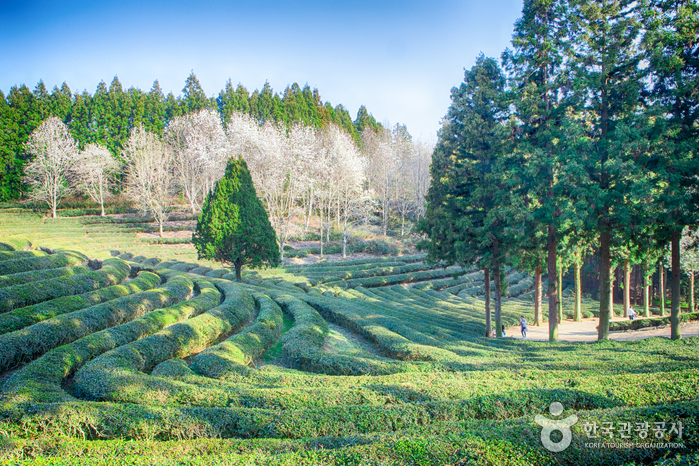
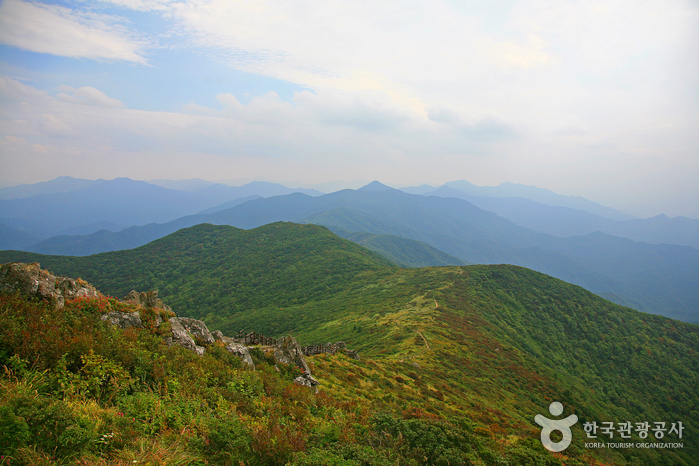
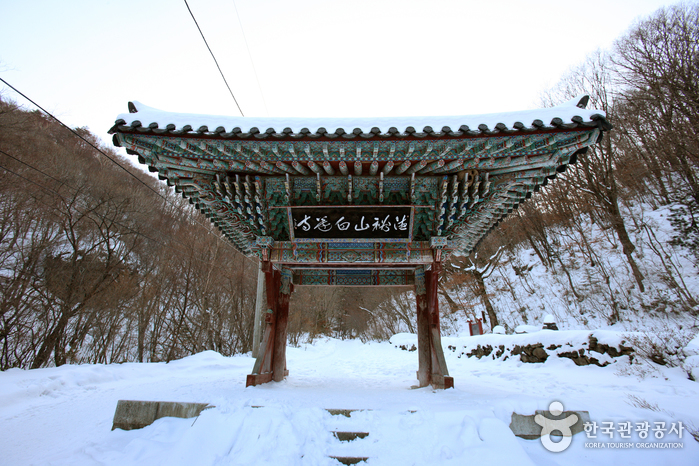
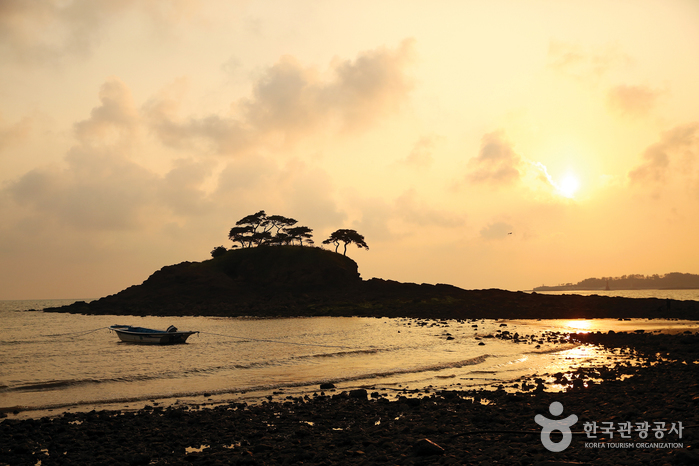
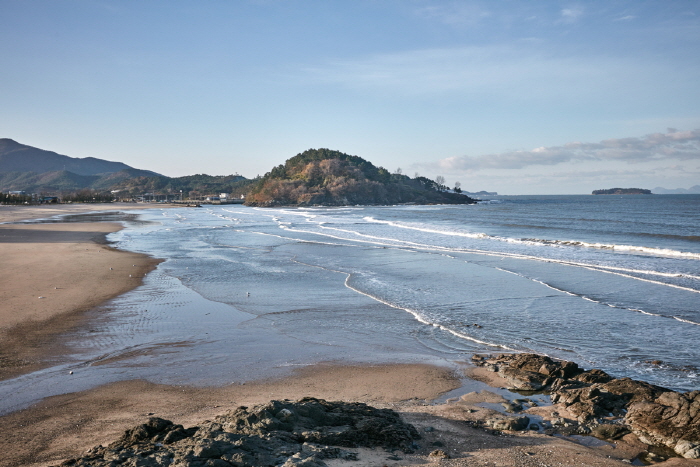
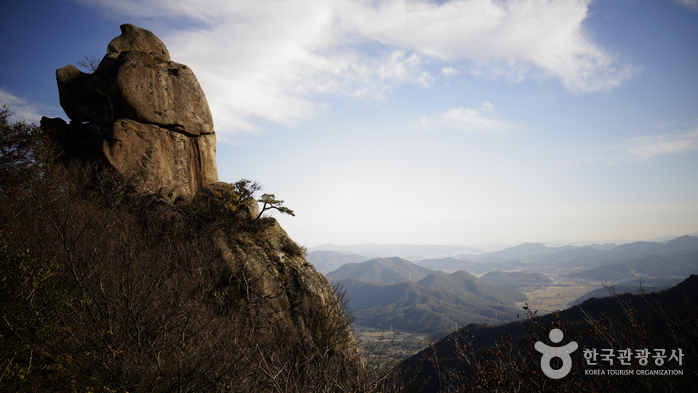
![Jeonju Hanok Village [Slow City] (전북 전주 한옥마을 [슬로시티])](http://tong.visitkorea.or.kr/cms/resource/50/3479250_image2_1.jpg)
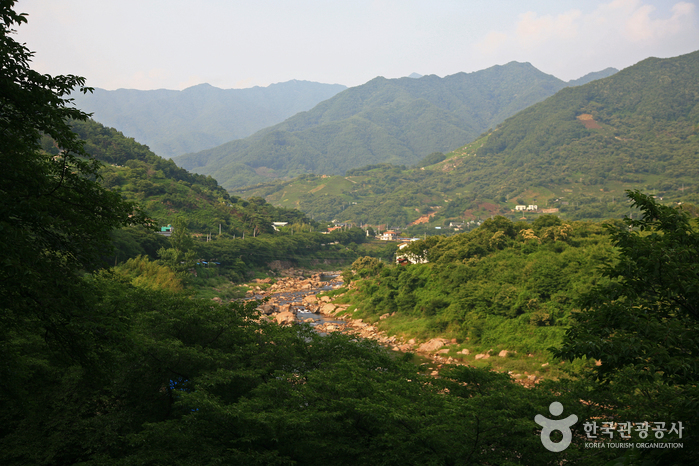

 English
English
 한국어
한국어 日本語
日本語 中文(简体)
中文(简体) Deutsch
Deutsch Français
Français Español
Español Русский
Русский